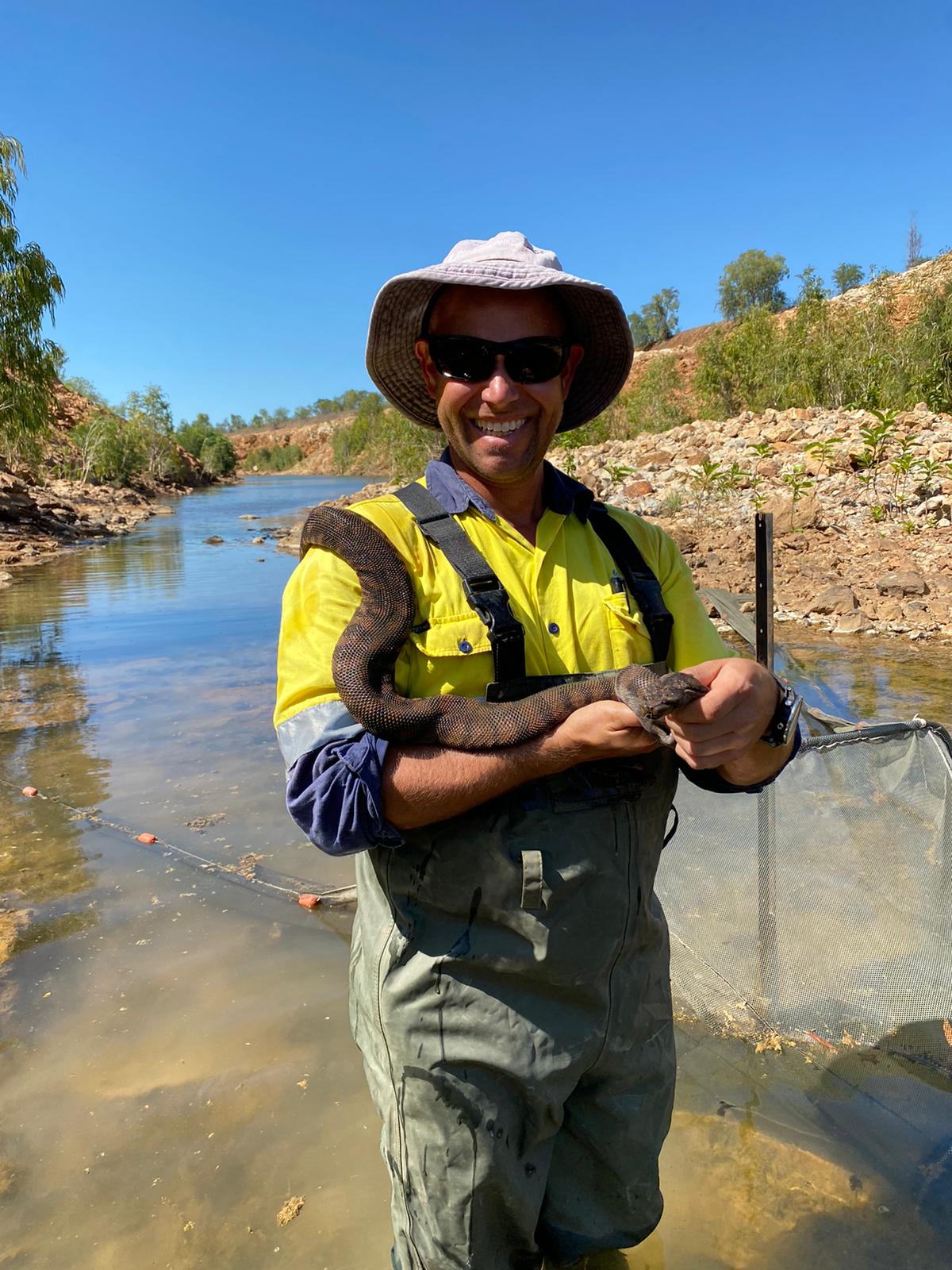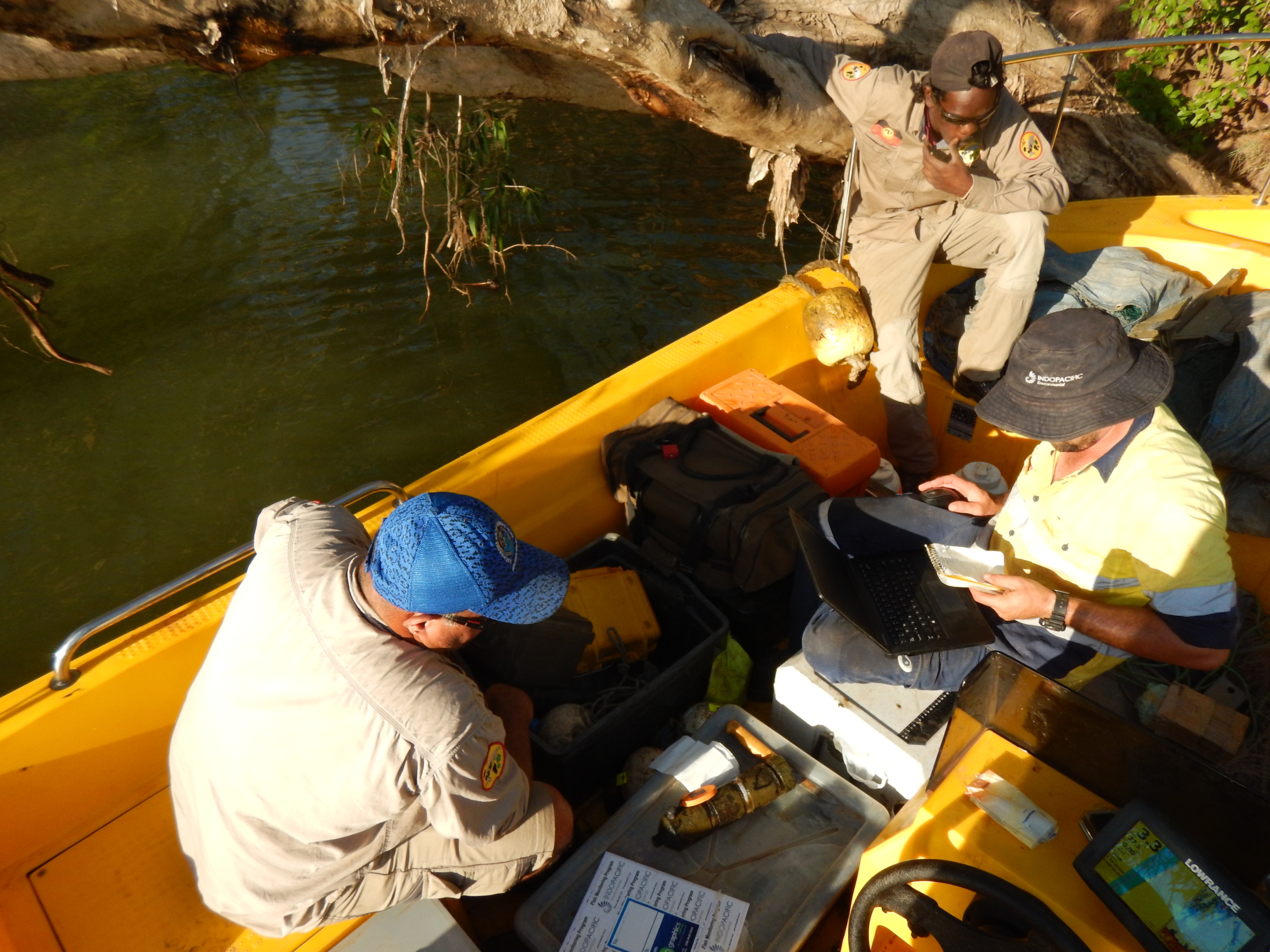Indo-Pacific Environmental has worked with McArthur River Mine since 2006, initially to support the mine’s transition from underground to open-cut operations. This expansion involved the rechannelling of over 5.5 km of the McArthur River and 3.5 km of one of its tributaries. Since then, IPE has maintained a close working relationship with McArthur River Mine, local ranger groups, and the local communities of the Gulf of Carpentaria Region, aimed at ensuring the aquatic fauna and riverine habitat remains healthy.
Restorative works in the diverted channels have included installation of woody debris, the coordinated planting of riparian species, and creation of sinuosity in the channel to provide various habitats. As well as ongoing water and sediment quality monitoring, tissues of fish and other taxa are collected and analysed to ensure mine-derived products are not impacting the river. IPE also undertakes annual programs monitoring macroinvertebrate assemblages and riparian revegetation. Habitat connectivity through the diversion channel is also assessed for the critically endangered large tooth sawfish (Pristis pristis). A network of acoustic receivers has been established, allowing the tracking of tagged sawfish through the McArthur River catchment. In recent years, ethnoecological surveys and studies have been conducted with the Garrwa, Gurdanji, Marra and Yanyuwa people to document traditional uses of plants and animals in the region.






